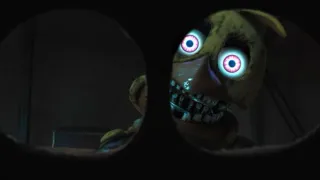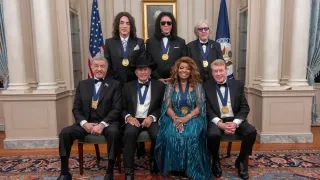June 3, 2024
New Book Looks at How 'Mommie Dearest' Became a Camp Classic
Kilian Melloy READ TIME: 7 MIN.
"'Mommie Dearest' was compared to 'The Rocky Horror Picture Show' early on," A. Ashley Hoff, author of the new book "With Love, Mommie Dearest: The Making of an Unintentional Camp Classic," tells EDGE of the 1981 film starring Faye Dunaway as Joan Crawford. "How much of that was planted by certain studio executive with the [gossip] columnists remains unknown," the writer of the immensely entertaining history of the infamous film goes on to add, "but it definitely added to the film's reputation as camp classic.... and yet, it has perversely enough kept the movie alive."
True enough. While the film starts out much as Hoff describes the film's producer, Frank Yablans, and director, Frank Perry, intended it to be – a serious drama about the nature and effects of child abuse – there soon comes a point when things turn on a dime. The film becomes a farce, and only gets more campy and uproarious from there.
This was precisely what audiences thought upon the film's initial release, more than forty years ago. The response caught the filmmakers, and the studio, off-guard – so much so, in fact, that Paramount Pictures, in what must have been a moment of panic, sought to lean into the film's instant status as a camp classic by quickly revising its original ad campaign, running an illustration of a frenzied Crawford wielding a wire hangar and declaring, "The Biggest Mother of Them All!" It was a shocking change of tack that drew so much backlash the studio quicky dropped the new ad and returned to the original campaign.
Not that it helped. The film's legacy as a catastrophic misfire endures even today. In a way, that's of a piece with the tormented history of the movie's development and production, with the film being based on the tell-all book by Crawford's adopted daughter, Christina, who was disappointed with Hollywood's treatment of what she intended to be a piercing and powerful look at a serious subject. Instead, the world remembers Faye Dunaway's terrifying, cold cream-smeared face and an attack on a child prompted by a dress hanging on a wire hangar. Like many, I suspect, I knew the infamous scene long before ever seeing the movie: "No wire hangars – ever!"
"Mommie Dearest," the movie, was supposed to be so much more. Actually, it was so much more, and that was part of the problem; in terms of footage and sheer run time, the rough cut far exceeded the standard two-hour format of movies from its day, and the editing job that trimmed "Mommie Dearest" back to a more manageable length made a hash of the film's narrative logic, such that the Crawford home looks like a madhouse, and Crawford herself seems unstable.
How much of that legendary image jibes with fact? How much is distortion, or outright invention? Opinions vary. Some people side with Christina Crawford, whose book does indeed cast an unflattering light on Crawford's parenting; others dismiss the book, and Christina, claiming that Christina intended a hatchet job and not a serious portrayal of child abuse.
And yet – somehow, the film (because of its deficiencies, rather than despite them) lingers in the public consciousness, and Christina Crawford's memoir, and the movie as well, have had some positive impact. A. Ashley Hoff told EDGE the hows and the whys behind the making of "Mommie Dearest," and the cultural resonances it carries today.






